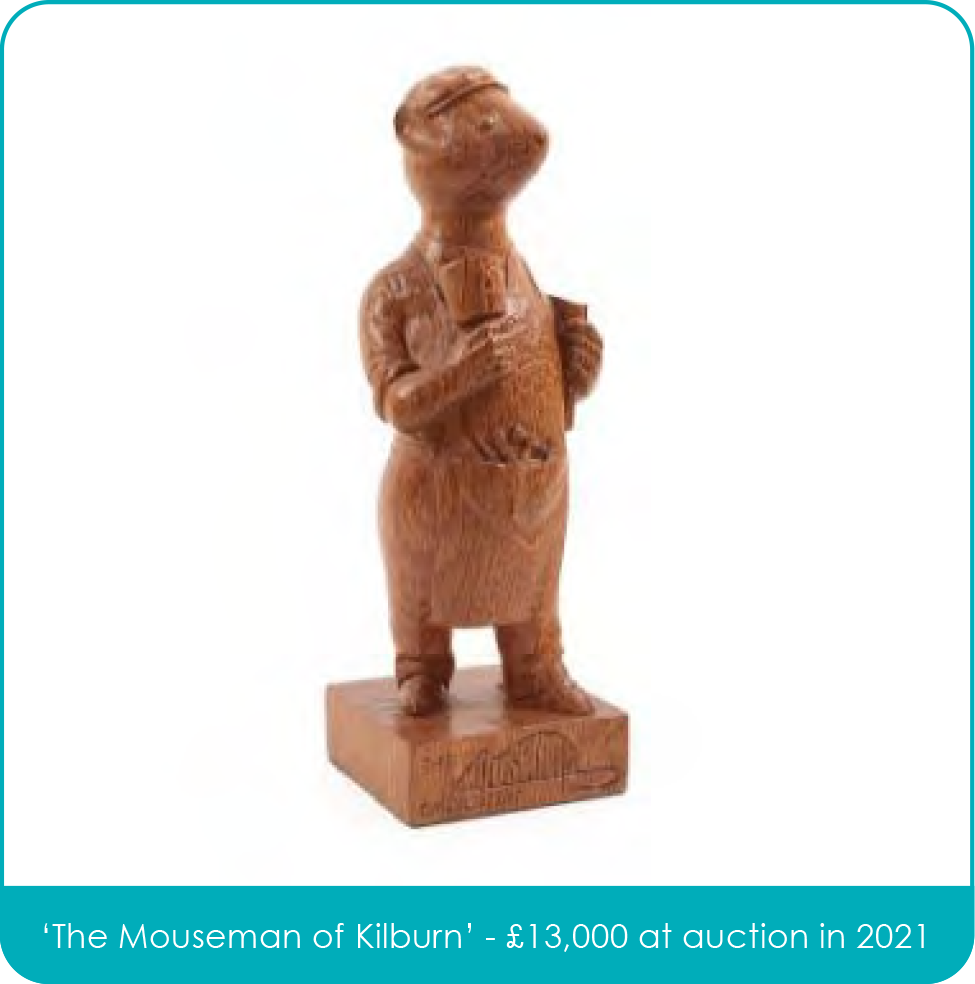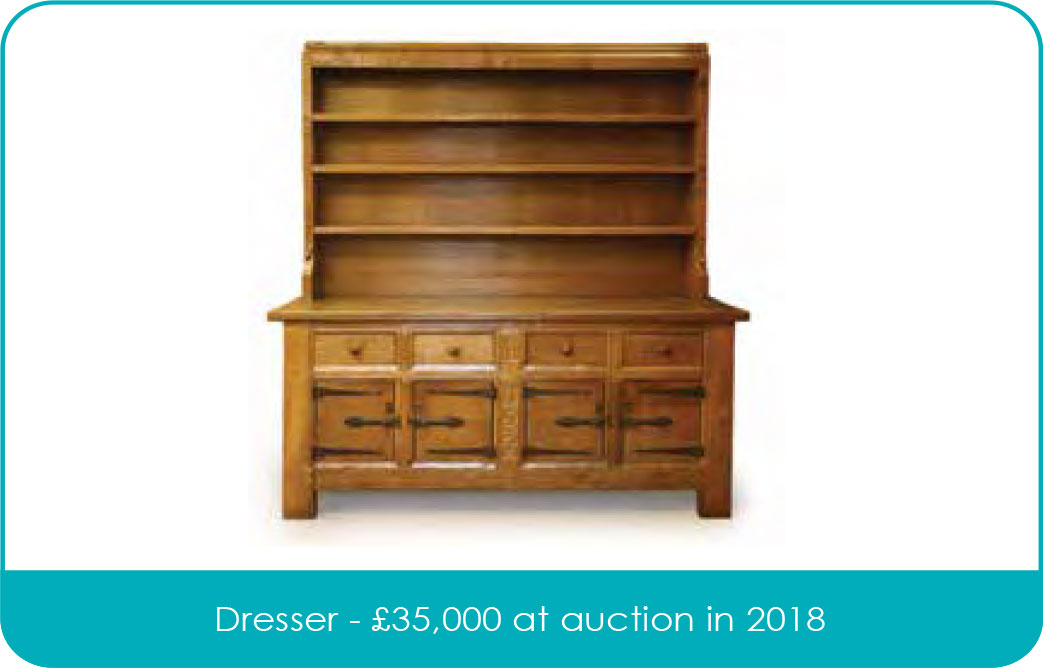One knows that a true sign of an endearing artist is that of the moniker – we have seen it recently with Banksy, and throughout the past few decades with musicians such as Ringo and Prince, but perhaps one of the trendsetters in this field was actually a Victorian woodworker from Yorkshire, called Robert Thompson.
Born in 1876 in the small town of Kilburn in North Yorkshire, he inherited his father passion and skills for working with wood and specifically oak, starting with the family business creating doors, gates and kitchen cabinets amongst many other run of the mill items, then in 1895 the range of furniture that he is best known for began to take shape.
The gothic style mixed with the very current Arts & Crafts movement gave Robert Thompson the artistic freedom to develop some of the most popular designs for furniture of the 20th Century. Encompassing traditional techniques of manufacture such as mortise and tenon joints, dovetailing and pegging, the unique quality fighting against what was a tide of massed produced utility style furniture.
Working initially with churches and schools, Thompson designed many pews and benches, and one day whilst almost playing an ‘in-joke’ upon himself, he carved a small rodent into one of the ecclesiastical pieces supports – in his mind the colloquial phrase “Poor as a Church mouse”.
Following this moment of inspiration, the desire for his work and style moved on from just churches and schools to reach the homes of the fashion conscious furniture seekers of the 1920s and 1930s, and these without doubt are the pieces to look for when it comes to collecting. By this point ‘Mouseman’ or ‘Mousey’ had trademarked the cheeky chap whom now adorned all of his pieces, and not as a joke, but as a sign of quality.

The dresser detailed below is one of the many bigger pieces made by Mousey in the peak of his career, and whilst it made £35,000 at auction back in 2018, one would expect a retail price for it in 2024 to be over £50,000.

The Blanket box, with a fantastically 17th Century influence – even with a cheeky nod having the date of manufacture in a moulded plaque to the front, indicates that it was made in 1920, the start of the pinnacle of his career – commanded a price of £12,000 in 2022 at auction, which identifies it as being one of the most desirable medium sized pieces.

The last two items show the creative side of Mouseman, combining a mantel clock flanked by a pair of elephants, which without Thompsons influence would be virtually valueless, and perhaps one of my favourites, a sculpture of a mouse with apron and tools, even entitled ‘The Mouseman of Kilburn’. Funnily, this title indicates the humility of the artist that he could laugh at his own fortune. These items making £10,000 in 2023 and £13,000 in 2021 respectively indicates the rarity and demand for such individual pieces.

The Mouseman legend has lived on for decades following Mousey’s death in the 1950s, with his family still at the helm of the business creating quality oak furniture in North Yorkshire to this day, with many of the original designs still available, and whilst it is not uncommon to see Mouseman pieces at auction, the rarer items are still a treat to see, and still make the kind of prices that befit a man of such character and celebrity. Call us today to enquire about an appointment on 01883 722736 or email enquiries@doerrvaluations.






